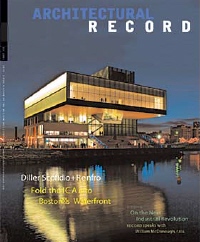Scholarly vs Popular Articles
Criteria for Publication Types
|
Criteria |
Scholarly Journal |
Trade Publication |
Popular Magazine |
|
Examples |
|
||
|
Articles usually peer-reviewed before publication by other scholars or experts in the field) |
Articles evaluated by editorial staff who may be experts in the field, not peer-reviewed Often published by commercial enterprises, though may come from specific professional organizations |
Articles evaluated by editorial staff, not experts in the field. Edited for format and style. |
|
|
Scholarly researchers, faculty and students |
Professionals in the field |
The general public |
|
|
Articles are written by experts in the field. Include author credentials. Author affiliations listed, usually at bottom of the first page or at end of article. |
Articles may be written by a member of the editorial staff, a scholar or a free lance writer. Author is usually a professional in the field, sometimes a journalist with subject expertise. |
Article may be written by a member of the editorial staff or a free lance writer. Author is frequently a journalist paid to write articles; may or may not have subject expertise. |
|
|
Articles contain an abstract (descriptive summary of the article contents) before the main text of the article. Often report original research and reviews while expanding on existing theories. Offer critiques on previously published materials. |
Report current news, trends and products in a specific industry. Include practical information for professionals in the field or industry. Cover news about people, organizations, new publications, conferences, and topical issues. |
Articles are typically a secondary discussion of someone else's research; may include personal narrative or opinion. Cover news, current events, hobbies or special interests. |
|
|
Illustrations are few and support the text, typically in the form of charts, graphs and maps. Few or no advertisements. |
Photographs, graphics and charts. Trade-related advertisements targeted to professionals in the field. |
Slick and attractive in appearance with color graphics. Glossy advertisements and photographs. |
|
|
Specialized terminology or jargon of the field. Assume that the reader is familiar with the subject. |
Specialized terminology or jargon of the field, but not as technical as a scholarly journal. Geared to any educated audience with interest in the field. |
Short articles are written in simple language.. Language for any educated audience, does not assume familiarity with the subject matter. |
|
|
Very structured. Includes article abstract and bibliography. May include sections on methodology, results (evidence), discussion, conclusion, and bibliography. Page numbers consecutive throughout the volume.(Example: Issue 1 will end on page 455; Issue 2 will begin on page 456.) |
Informal. Articles organized like a journal or a newsletter. Typically use glossy paper. |
Very informal. May include non-standard formatting. May not present supporting evidence or a conclusion. |
|
|
Verifiable quotes and facts. Sources cited in footnotes or bibliographies. Bibliographies generally lengthy, cite other scholarly writings. |
Occasionally include brief bibliographies. Not required to report any research results. |
Sources sometimes cited, but not usually in footnotes or a bibliography Information is often second- or third-hand, original source rarely mentioned. |
|
|
Examples |
More Resources
- Worksheet: Comparing Popular & Scholarly PublicationsStudents locate, analyze, and compare various publications. From Gustavas Adolphus College.
- Anatomy of a Scholarly ArticleTutorial identifies sections of a scholarly article.
(Less applicable to many arts & humanities fields.)
From NCSU.


